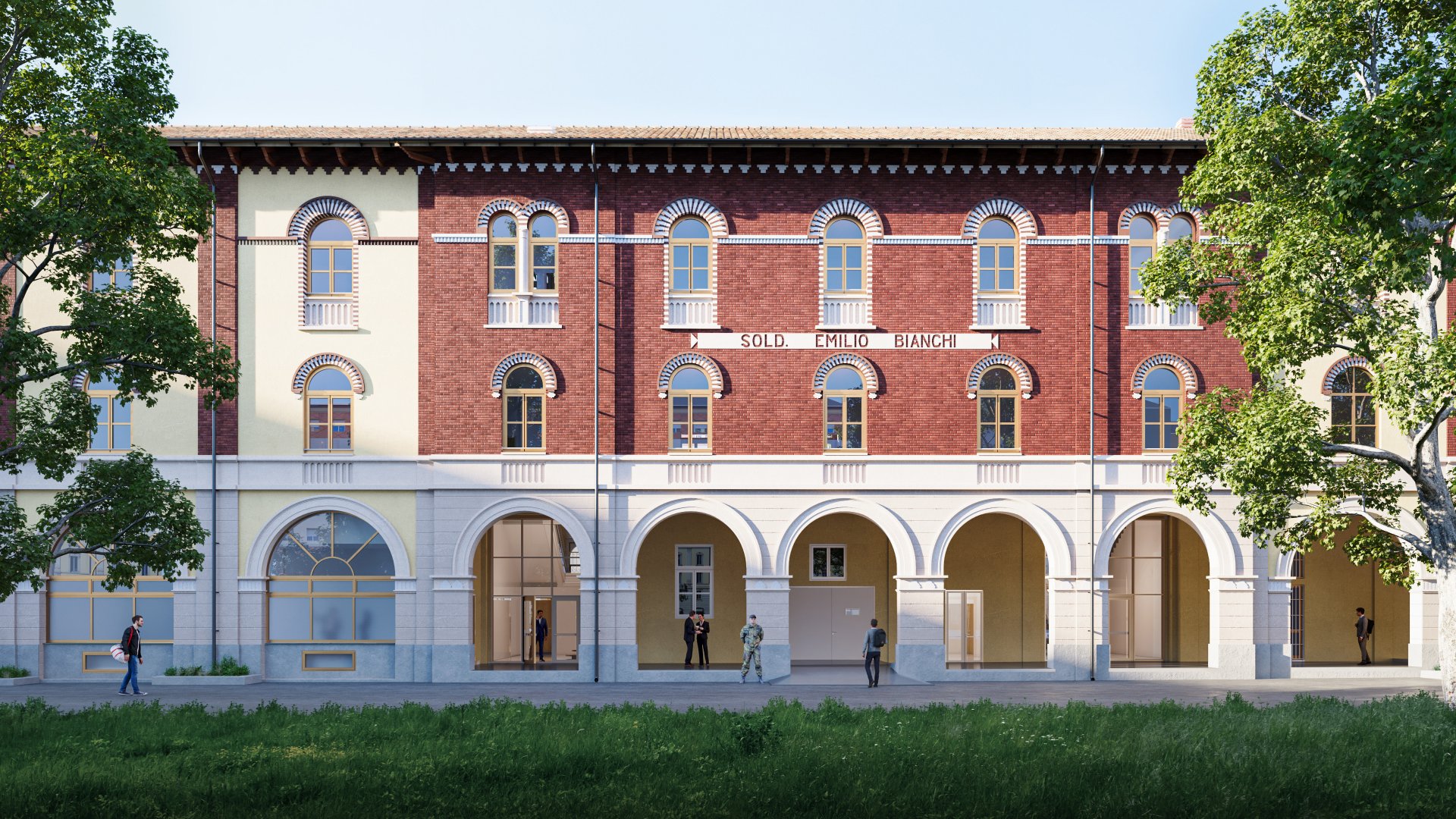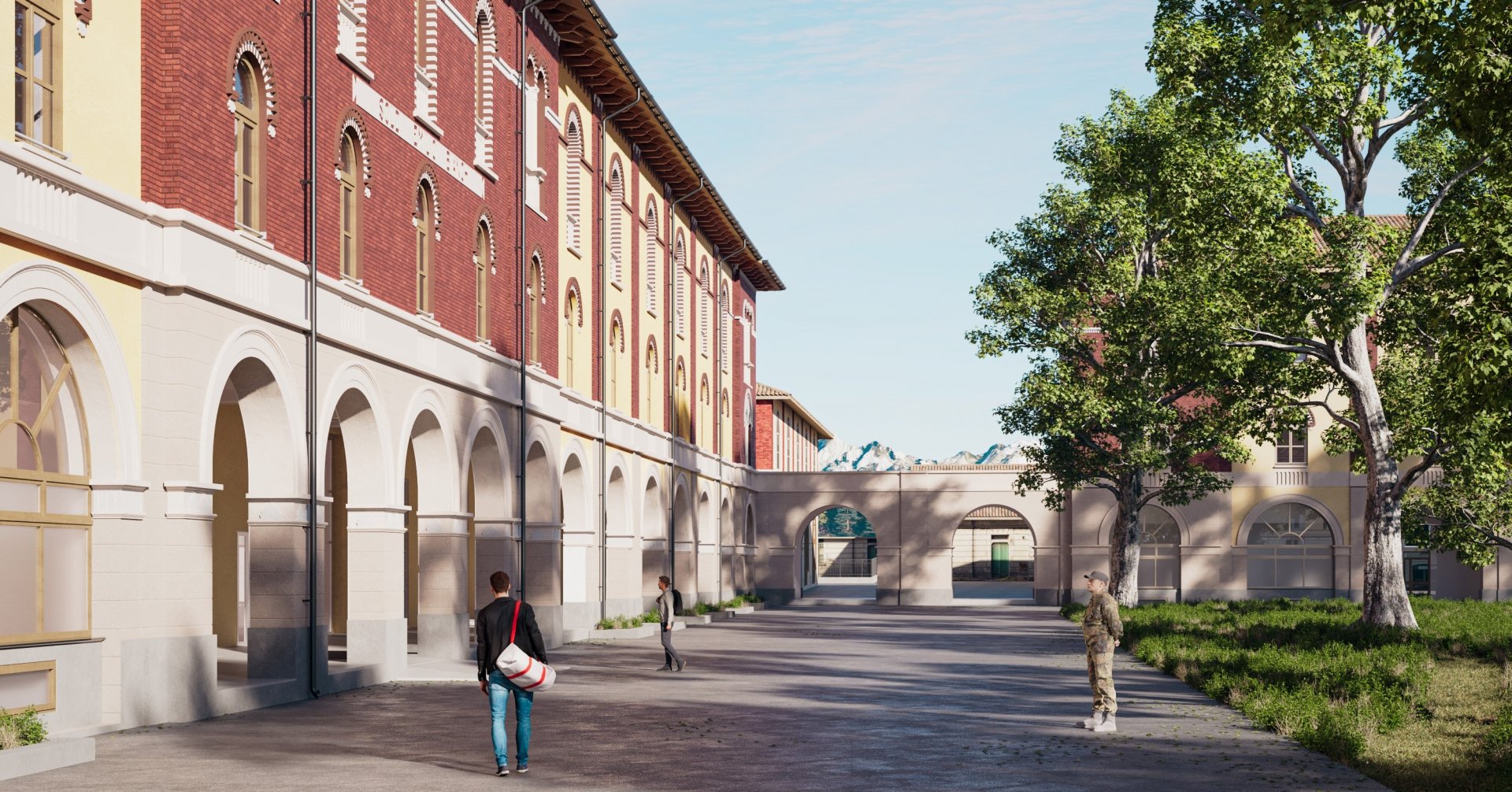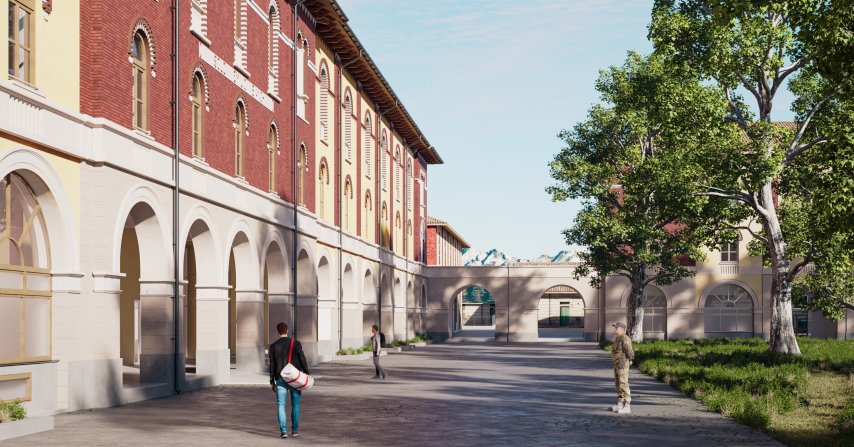Works
‘’Dabormida’’ Barracks renovation
‘’Dabormida’’ Barracks renovation
Historical dimension of a contemporary intervention: renovation of the Dabormida Barracks
- Location
- Turin, Italy
- Typology
- Office
- Year
- 2021 - ongoing
- Status
- Construction in progress
- Dimensions
- 7.900 sqm
- Collaborators
- AICI Engineering, Servizi Geotecnici
- Client
- Agenzia Del Demanio - Direzione Regionale Piemonte e Valle d'Aosta
- Activities
- AR – ST – MEP design
Description
Restoration of the Dabormida barracks in Turin is an opportunity to enhance the Umbertino building fabric of the late 1800s, a representation of a research that at the time aimed at a stylistic unity among the public buildings of the reign. The neo-gothic character of the stylistic elements thus becomes a distinctive and identifying trait of a historical period that relives in everyday life and is part of a physiological stratification of the urban fabric.
The restoration and re-functionalization of the interiors was carried out starting with a laser scanner survey. The point cloud rendering was then imported into the BIM environment as a starting point for the subsequent phases of project development and modeling. In this case, the use of these technique acquires further added value precisely due to the strong connotation of the building and its elements, allowing for a more accurate restitution and optimization of intervention strategies.
The building has three floors above ground and is characterized by the geometries of the masonry vaults in the basement and the regular and squared layout of the upper floors. The panorama of local consolidation interventions on walls and ceilings is part of the more general restoration intervention focused on the “Piedmontese” roof. The replacement of the single-light with mullioned and three-light windows in the upper orders of the vertical head spans is strategic in harmoniously renewing the language of the existing partitions following a marked and emphatic rhythm.
Renewal and re-functionalization are interpreted as a new chapter of a historical memory that maintains its roots and is projected into a new dimension of contemporaneity.



